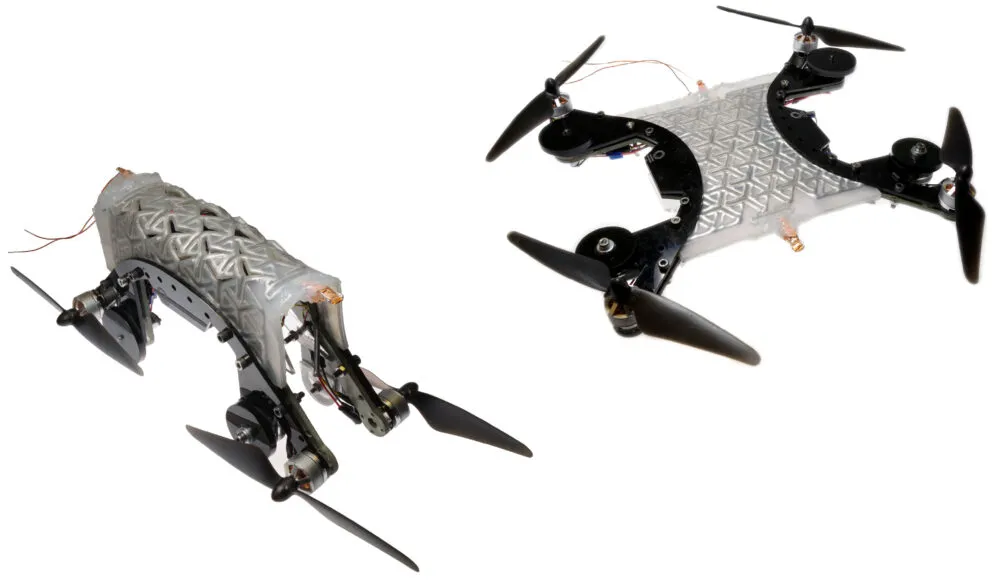Through the combination of some rubber, metal, heating technology and the ancient art of kirigami (a form of origami where paper is cut and folded), a new soft robot is able to morph from a ground to air vehicle and back again.
This technology was developed by a team at Virginia Tech led by Michael Bartlett, an assistant professor in mechanical engineering. Forgoing the usual gears, belts and motors that would be needed to transform a robot, the team instead looked to flexible materials.
“When we started the project, we wanted a material that could do three things: change shape, hold that shape, and then return to the original configuration, and to do this over many cycles,” said Bartlett.
“One of the challenges was to create a material that was soft enough to dramatically change shape, yet rigid enough to create adaptable machines that can perform different functions.”

Looking for a structural frame that could be morphed, the team took an unusual route – the Japanese art of making shapes out of paper by cutting and folding. Kirigami has been addressed for its use in science before, able to support many times its own weight thanks to the complex geometry it uses.
When used with rubbers and composite materials, the researchers were able to form a structure of a repeating geometric pattern that could be morphed and readjusted while still holding its strength.
In conjunction with the concept of kirigami, the team also needed a material that could both hold its shape, but also allow that shape to be erased on demand. To do this, they used an endoskeleton made from a low melting point alloy embedded into a rubber skin.
In typical situations, when a metal is stretched too far, it becomes bent and cracked, but with this special metal inside the rubber fixtures, the material would hold a desired shape rapidly when stretched – perfect for soft morphing materials.
The final feature in this soft material robot was a heater. Soft tendril-like heaters were placed along the structure that, when heated up, would convert the metal to a liquid allowing it to return to its original shape before cooling again.
“These composites have a metal endoskeleton embedded into a rubber with soft heaters, where the kirigami-inspired cuts define an array of metal beams. These cuts combined with the unique properties of the materials were really important to morph, fix into shape rapidly, then return to the original shape,” said Dohgyu Hwang, a graduate student who co-authored the paper.
The Japanese kirigami-inspired structure was able to create complex shapes, ranging from cylinders to balls and all the way through to the bumpy surface of a pepper. Fast as well, the shape could change and fix in place in less than 1/10 of a second when dropped onto a ball.
Looking to the future, this technology has numerous use cases. One example that the team tested was a fully functional drone that autonomously morphs from a ground to air vehicle. They also managed to create a small submarine that could retrieve objects from an aquarium by morphing its belly around the object.
“We’re excited about the opportunities this material presents for multifunctional robots. These composites are strong enough to withstand the forces from motors or propulsion systems, yet can readily shape morph, which allows machines to adapt to their environment,” said Edward Barron, another graduate student who co-authored the paper.
The researchers are now looking at the role this technology can play in soft robotics. It could be used to create machines that can perform diverse functions, self-heal after being damaged and spur advancements in wearable devices.
Read more about robotics:
